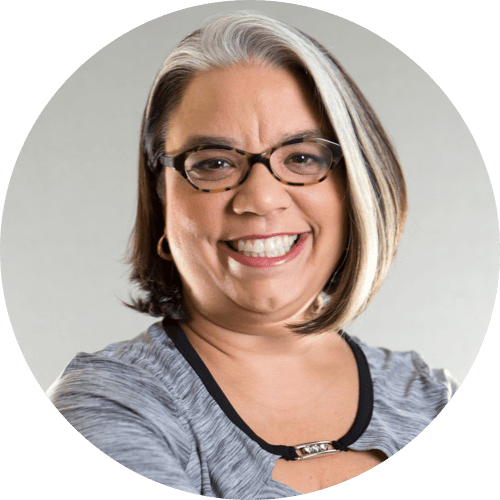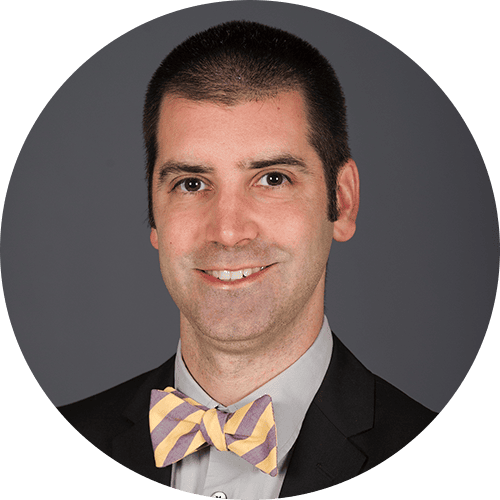Diversity, Equity, and Inclusion: Hear from The Experts
5:27
Hear from two experts on the topic of caring for diverse populations in medical simulation in this video. Or, read the full Q&A below.

Dr. Desiree A. Díaz PhD, FNP-BC, CNE, CHSE-A, ANEF, FSSH, FAAN
University of Central Florida

Jackson D. Déziel, PhD, MPA, NRP
Western Carolina University
Desiree: I think diversity should have always been playing a role in simulation. When I look back and think about some of the things I’ve done in the last decade with diversity, it really is only now coming to the forefront – but should have always been there. It’s more than the color of a manikin’s skin, what language they can speak, or their back story. It really should encompass the totality of what we live on a daily basis.
Jackson: It’s really central to all that we do. Our population that we serve looks different, thinks different, is different – so that needs to be reflected in our training. Are we perpetuating disparities in health care? This is a prime area to lay a foundation to end those disparities.
Desiree: I think the biggest tip I could tell anyone is: have a population base that you could tap into to make sure that you’re not being offensive in any way. Good intentions can often lead to bad and poor outcomes. It doesn’t need to be a paid group [or] a big group. There [are] a lot of community groups that’d be more than willing to just give their feedback on a simulation, on even moulage props, on what you’re implementing into your scenarios.
Jackson: It’s not a one-size-fits-all. We’ll start there. It’s different for everybody – but intentionality is where it begins. We need to be intentional with all that we do – so if you are implementing any strategy, it needs to be for a reason.
Desiree: I think taking time. Time is something you can never get back, and you can’t just plop DEI into a scenario. It needs to be thought out. Are they smart objectives? Do you have an objective related to DEI, or are you just checking a box? If I’m having a scenario – whether it be a linguistic piece, a cultural aspect – is there a specific objective related to that particular nuance that you put into a scenario? If not, why bother?
Jackson: Advocacy. You need to be an advocate. Again, one size does not fit all for these initiatives, for these strategies. Advocacy is where it begins – so if you can begin as an advocate, that is a springboard to so much more.
Desiree: I think that’s a trick question! All of my scenarios since I started in simulation actually have included diversity. One of the things I’m working on now is making it more complex: scaffolding that, so I’m not just looking at healthcare disparities within a particular culture, but then how can I pull in the inclusion of a different parent in the role so it’s not just always the mother and the baby. Is there a father and the baby? Is there…another caretaker? Really looking at inclusivity on all aspects of human interaction within that simulation related to diversity, equity, and inclusion. But again, it goes back to the objectives. What is the purpose of doing that?
Jackson: Integrating more of this DEI and these initiatives into my own simulation just begins with introspection. It begins with pulling up what you have already and what you’re doing already and even little tweaks, minor changes. As an example, I pulled up a number of my scenarios and found that 90% of those scenarios were male. Small changes, just in gender, can make a big difference – because you know what? Women have asthma attacks, too.
Desiree: I think my biggest success story as of late is a whole group of a particular culture group that came up after a healthcare disparity sim and said, “Oh my gosh, thank you for finally having a scenario that relates to me, my culture…I feel like I’m getting educated, my peers are getting educated on situations that happen to me, to my family.” And I think that was huge – because oftentimes if we don’t represent something, people put less meaning on it. By simply discussing issues that are out there – we’re not making them up. The facts and statistics are the facts. But then when you see that someone’s actually teaching to that – someone’s actually trying to change that discrepancy within healthcare outcomes – it’s like that “aha!” moment of, “Wow…I matter.” I think that’s the most important success.
Jackson: Success stories in our simulation focused on DEI really come through conversation and allowing students to have those conversations. The successes that I have seen have been in the conversations that the students are now comfortable having with the simulated patient, even if it’s a manikin. They’re comfortable having sometimes uncomfortable conversations and uncomfortable topics (or what we think are the uncomfortable topics). Just those conversations have been the greatest success thus far for our program.